
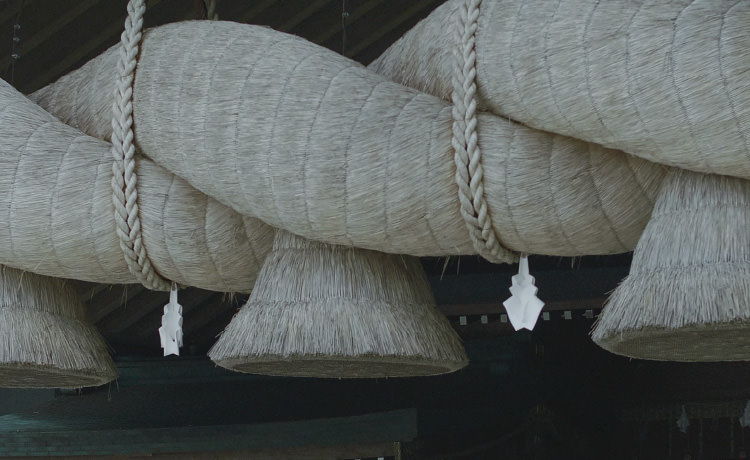


The land of Izumo has a colorful history, with many ancient legends that go back to the time of mythology. The Hii River runs through the city of Izumo and helped form the Izumo Plain, which gave rise to the iron sand used in tatara, a traditional furnace for smelting iron and steel. The river flows into Lake Shinji, nourishing a rich ecosystem of fish and shellfish. Let’s take a look at some of the people who live in this land where time runs eternal, and some of the things that make it so special.

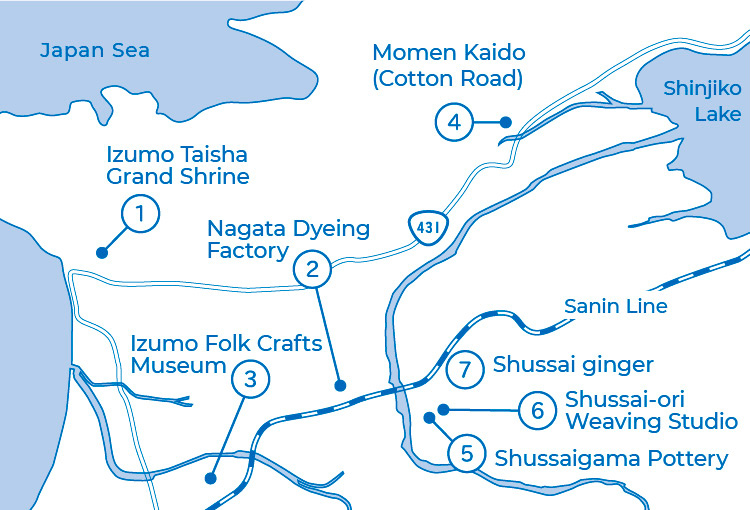

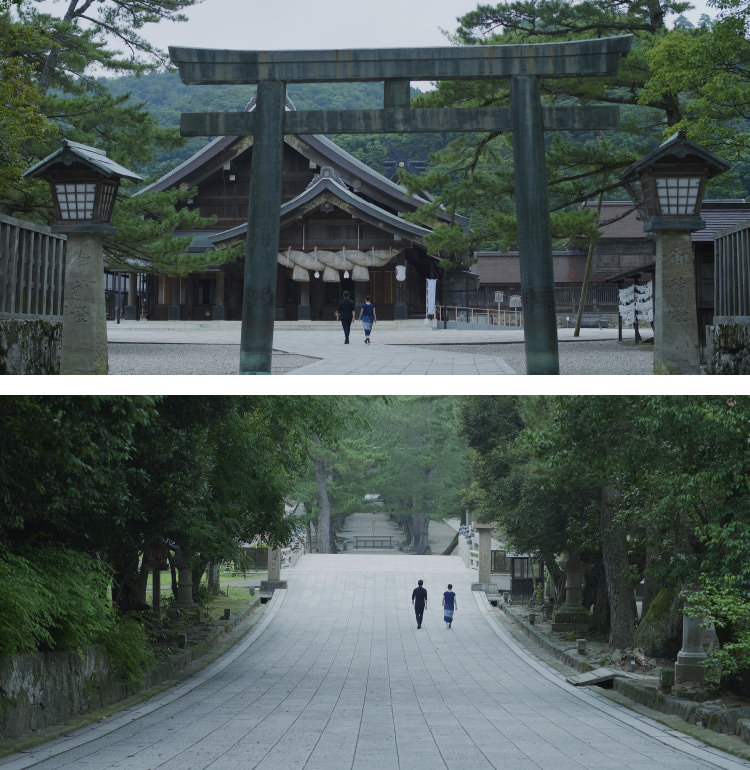
When you arrive in Izumo, the first place to visit is this shrine, affectionately known as “Taisha-san." Here, the traditional way to pray is by clapping your hands together four times. This is more clapping than usual, and gives the shrine a pleasingly busy feel. The shimenawa, or sacred straw rope, festooning the Kagura-den, a large hall for performing traditional rituals, is one of the largest in Japan and resembles clouds floating in the sky. In Izumo, the 10th month of the lunar calendar traditionally used in Japan has the name Kami-ari-tsuki, or the Month of the Gods. This is when the myriad gods from all over Japan gather at Izumo. Still today, Izumo Taisha Grand Shrine plays a central role in the hearts and minds of Japanese people.

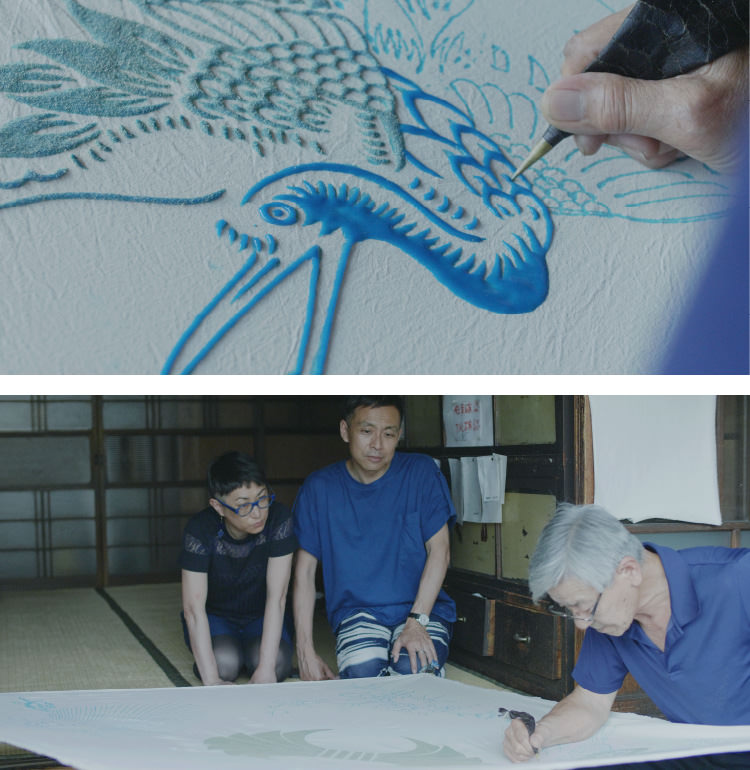
Izumo was once home to more than 40 aizome (Japanese indigo) dyeing workshops. Today, the workshop run by the Nagata family is the only one here that continues to dye cloth using the tsutsugaki technique, where resist patterns are drawn freehand using a paste made of sweet rice. The workshop sits along the Takase River and uses water from the Hii River. Looking at the tsutsugaki dyeing, created from only the natural ingredients of rice paste, Japanese indigo and river water, we were moved to see this kind of honest work that has not changed since ancient times.

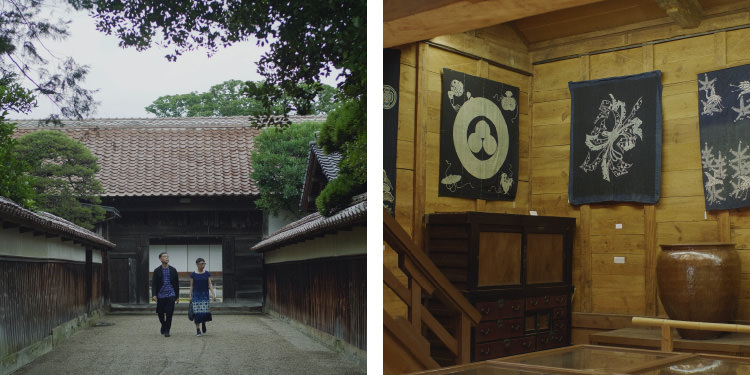
This museum houses a large collection of folk crafts from Shimane Prefecture. The museum uses a portion of the residential complex of the Yamamoto family, who was a wealthy farming family back in the day. Even now you get the curious feeling that you're inside someone's home. The collection includes many fine examples of folk art, and the residence, built in the mid-Edo Period (1703–1867), is a work of folk art in itself! The moat surrounding the approach to the entrance is also truly incredible.

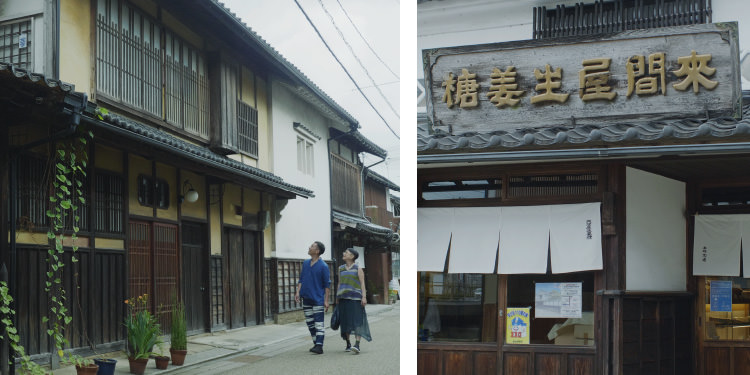
Izumo was formerly known as the region that produced Unshu cotton. The district of Hirata flourished as the crossroads of this cotton trade, and echoes of this can still be seen along the old trade road. Sake breweries and a ginger sugar candy shop that have been in operation for generations dot the road along with new establishments like an inn, an Italian restaurant and a craft microbrewery that operate out of renovated machiya, or traditional merchant houses, and are popular with younger generations.

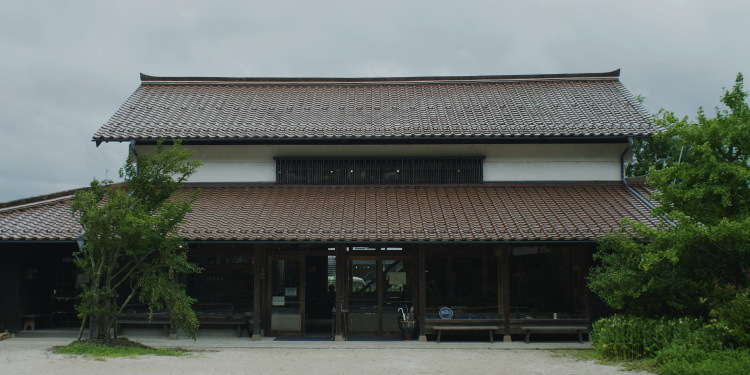
Inspired by the Mingei (folk art) Movement, the Shussaigama Pottery was started by five young craftsmen after World War II under the guidance of Kanjiro Kawai and Bernard Leach. Its modern pottery dishes designed for everyday use are quite popular. “Shussai Blue" pottery in deep navy will add elegant beauty to any table. And don't miss a visit to the bakery café next door, where you can enjoy a light meal and beverages served on Shussai pottery.

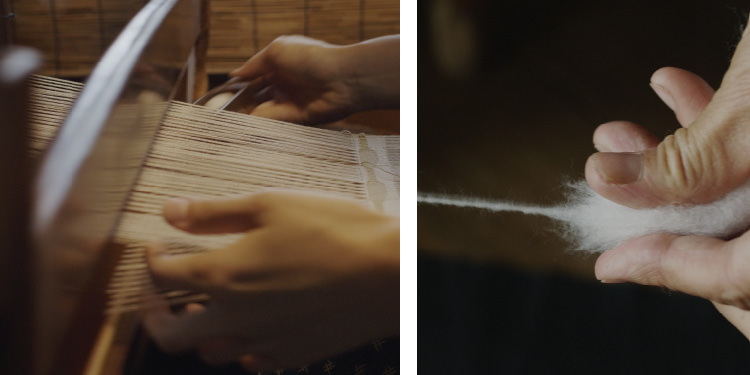
This weaving studio was started by the mother of Shin Tatano of Shussaigama Pottery, who studied at the Kurashiki Honzome Teori Institute (dyeing, spinning and weaving studio). The ash from lye used in dyeing is repurposed as glaze for pottery—a satisfying example of using everything without waste. The handkerchiefs made of hand-spun Japanese cotton grown in the field behind the studio have a softness to them that touches your soul.

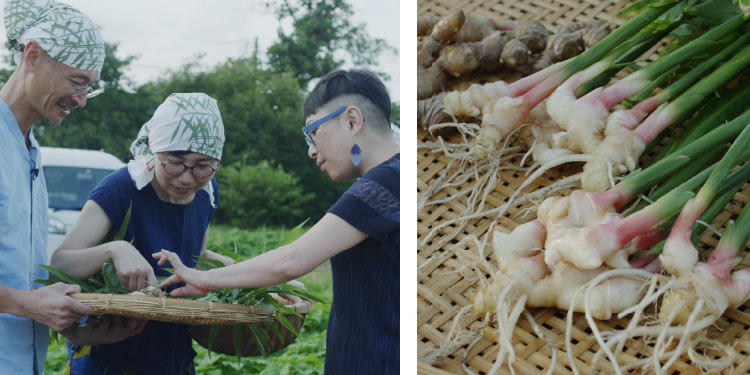
Only grown in the Shussai region, Shussai ginger is a traditional crop with a history going back more than 400 years. Highly fragrant and with so little fiber content that it can be eaten raw, it is a rare ginger variety nearly impossible to find in markets. Laborious to cultivate, its existence is now endangered with few people to carry on its production. The Koharas decided to move to Shussai after discovering Shussai ginger, and now grow it using natural farming methods. Their passion was like a jolt of inspiration.
職種:店舗販売 / 営業 / 生産管理 / パタンナー / デザイナー
正社員登用、給与は経験により相談。月20万円以上。
年齢性別不問。
厚生年金、健康保険、雇用保険等完備。交通費支給、賞与。
ご希望の方は、メールにて履歴書と職務経歴書をお送り下さい。
通過者のみ面接の返信をいたします。なお募集の職種は時期によって異なる場合があるのでお問い合わせください。
*学生のインターンは随時可能ですので、希望者は面接いたします。
送信先メールアドレス:matohu@lewsten.com
◇ matohuの理念
「日本の美意識が通底する新しい服の創造」をコンセプトに文化や歴史を大切にしながら、現代人の心に響く魅力ある「デザイン」を生み出すこと。それを深い「言葉」で表現し、共感者の輪を拡げて行く「場」を作って行くこと。
この3つを通して、多様で心豊かな世界をともに作り上げることがmatohuのプロジェクトであり、理念です。
◇ 仕事のやりがいと人間的成長
まかされた仕事を自分の創意で工夫していける環境です。1Fはショップ、2Fはアトリエになっており、デザイナーと直接話しながらアイデアを実現していけます。また文化、歴史など幅広い知識を学ぶ機会も多く大人の教養と礼儀が身につき、人間的にも成長できます。
人の心に彩りを添えるデザインを生活のなかに!を合い言葉にこれから世界に向けて発信するmatohuのスタッフを募集します。